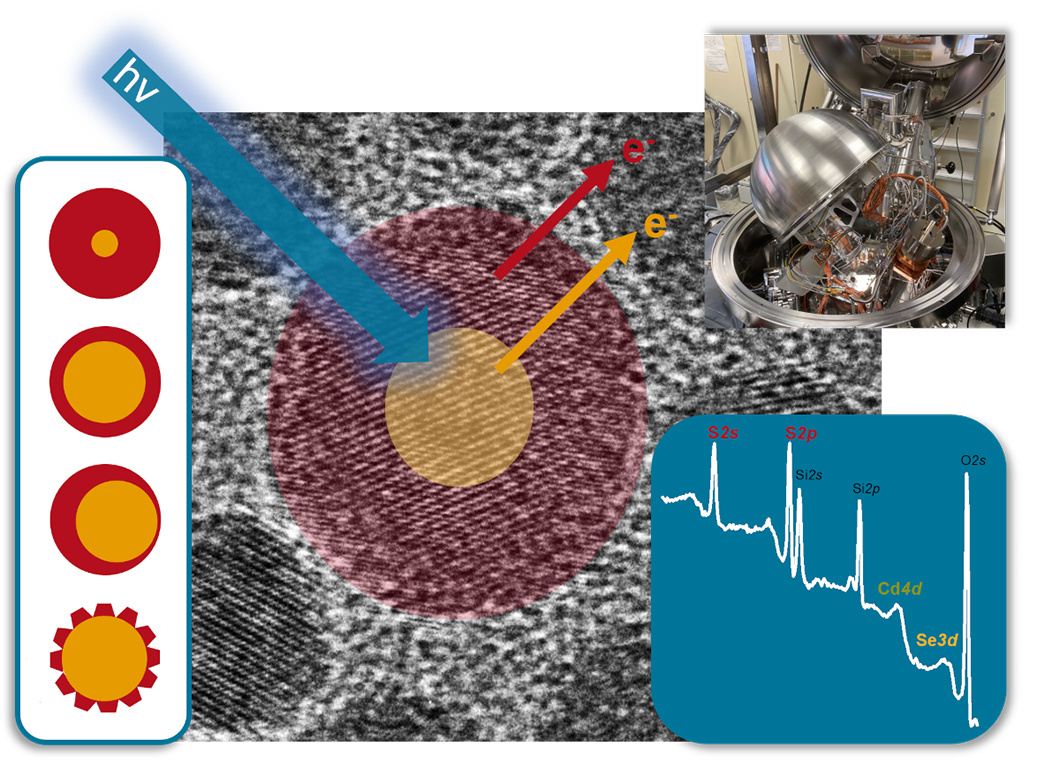
Photoelectron spectroscopy at core-shell nanoparticles. Left: Differently coated nanoparticles; right: insight into a spectrometer and a spectrum.
Source: BAM, Surface Analysis and Interfacial Chemistry division
Core-shell nanoparticles play an important role in many areas of our daily life and in industry. For example, they are used in cosmetics, in medicine, as well as for flat screens and catalysts. They have great potential for use in photovoltaic applications and fuel cells which are important pillars of the energy transformation. For the application and further development of these materials, a detailed characterisation is crucial. In addition to the size and morphology of the particles, which is usually obtained using electron microscopic methods, precise knowledge of the composition and surface chemistry is also important. This knowledge can be obtained non-destructively using X-ray photoelectron spectroscopy (XPS). With XPS the material composition of the region near the surface with a depth between 1 nm and 30 nm depending upon the excitation energy of the photons can be analyzed.
The structure of the particles can be modelled through different approaches on the basis of the measured spectra, using either the photoelectron peaks or the background of the spectrum. Thus, XPS has been developed to a powerful tool for the investigation of the coating of core-shell-nanoparticles.
The possibilities, limitations, and challenges of XPS for layer thickness determination were discussed in a review article. CdSe/CdS quantum dots were selected as representative nanomaterials. Hereby, the optical and electronic properties can be tuned by the size and shape of this nanoscale materials. Furthermore, investigations of nanoparticles which upconvert relatively low energy light into higher energy light were presented. Coated polymer particles were studied as a model system for nanoplastic particles. In all of these systems the composition, chemical structure and thickness of the coating were determined with XPS. With these analyses, it was possible to see if the coating was uniform or if gaps were present. Thereby, the correlation with other surface-sensitive methods and the use of different excitation energies were proved. A discussion about the accuracy of the results considering all potential sources of uncertainty completes the review
Composition, thickness, and homogeneity of the coating of core–shell nanoparticles - possibilities, limits, and challenges of X-ray photoelectron spectroscopy
Jörg Radnik, Xenia Knigge, Elina Andresen, Ute Resch-Genger, David J. H. Cant, Alex G. Shard & Charles A. Clifford
published in Analytical and Bioanalytical Chemistry, Vol. 414, issue 15, pages 4331 - 4345, 2022.
BAM, Surface Analysis and Interfacial Chemistry division


